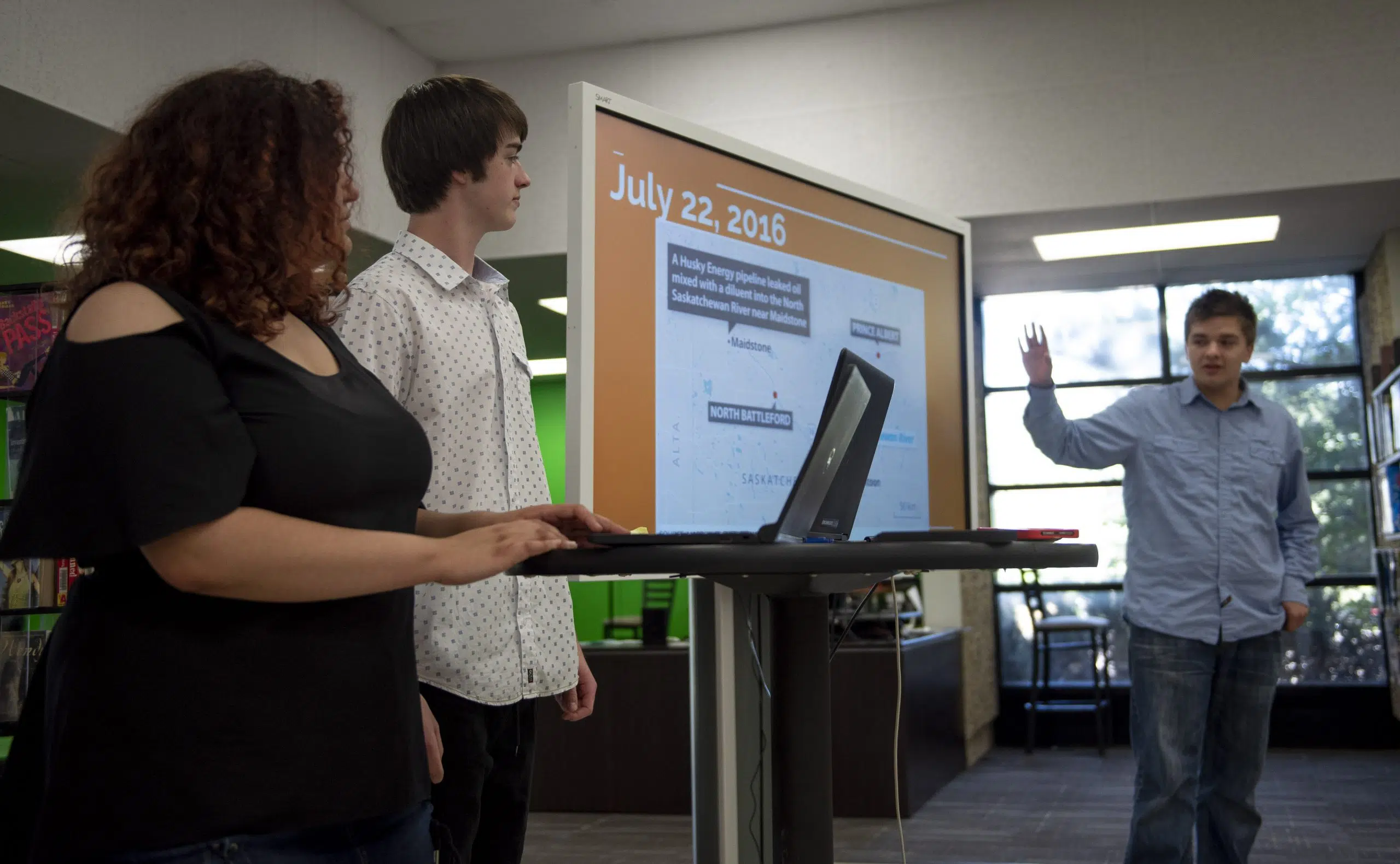
Carlton students present findings from test for heavy metals in North Sask. River
Five students from Carlton Comprehensive Public High School presented their findings from a recent study of heavy metals in the North Saskatchewan River and the impact to water quality after the 2016 Husky oil spill.
The students conducted research that involved utilizing the Canadian Light Source Synchrotron in Saskatoon to test for any residual metals from the crude oil in the river. They were primarily looking for any traces of chromium or vanadium, which can be unsafe for humans, among other more natural elements like nickel and zinc.
They began their testing by collecting water samples from the North Saskatchewan River in a handful of locations. They first pulled a control sample from upstream of the original spill site near Paradise Hill, another from a few kilometres downstream from the spill near Maidstone, and others along the banks of the river in North Battleford and Prince Albert. The students used a handcrafted 10-foot pole made from PVC pipe with an Erlenmeyer flask on the end to collect two-litre water samples from each site over a 12-hour period.
The students then conducted localized tests at Carlton. They tested for total dissolved solids (TDS) in the water, the turbidity, pH levels and flow rates. But in order to test for the trace amounts of metals, the students needed to use the Synchrotron at the University of Saskatchewan. The device circulates electrons at just under the speed of light to create a beam to test for x-ray fluorescence. The beam does this by hitting an electron, forcing it from the atom and replacing it. The wavelengths emitted from this process are measured to determine elements.


